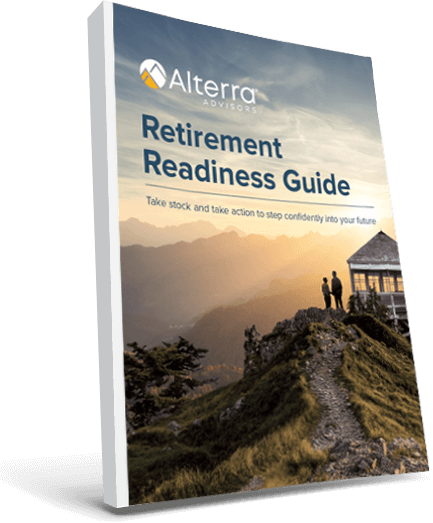Investing is a lot like making a journey on a boat. You’re moving toward an exciting new destination that can only be reached by trekking across the water and, in good times, it’s quite the view! But the ups and downs of the stock market can make even the make most seasoned investors a little seasick. Market corrections (sudden declines of 10% or more) are more than your everyday waves – they feel more like a storm, battering your boat.
Look no further than the start of 2022 for a stark reminder. From it’s high on January 3, the S&P 500 declined nearly 10% by January 27 and more than 13% by March 14. In these volatile times, if you find yourself wanting to pull your boat to shore, move out of volatile investments, and wait for things to calm down before continuing your journey, you’re not alone.
So why not move to safety and wait it out?
When it comes to investing, you always want to plan ahead for how to handle market declines. Here are three reasons to stay the course when volatility strikes.
1. Time, not timing, is what matters.
Moving to safety when the market declines brings a feeling of immediate security, but that short term relief can come at significant long term cost. Why? Because no one can predict exactly when a market drop will occur and you may find yourself wanting to move to safety after a series of down days. But in the last 20 years, 24 of the market’s 25 worst days were within one month of the 25 best days and you’re very likely to miss that rebound if you’re sitting on the sidelines. How much can this cost?
In 2022, the S&P 500 rebounded more then 11% in the two weeks following its March low. Over the long run, as discussed in Time in the Market Is Better Than Timing the Market, if you invested in the S&P 500 over 20 years and missed just the best 10 days (yes, 10 days in 20 years) you would have lost over half of the gains you could have achieved by staying invested.
2. Standing still isn’t waiting, it’s losing ground.
Time is your best friend and worst enemy when it comes to investing because time continues forward no matter what. Pull over to “wait out the storm” and you miss out on valuable dividends, interest payments, and possible gains. Here’s an example:
- An investor wants to accumulate $2,000,000 and expects to earn 7% per year.
- Over 20 years, she needs to save $45,595 per year to reach her goal.
- If she waits and only has 10 years to reach her goal, she now needs to save $135,286 each year – nearly three times as much.
While you may not plan to sit out for 10 years, it’s crucial to understand the impact that time in the market has on your future results.
3. Market corrections are opportunities.
Think of shares in your portfolio like square feet in your house. Let’s say you need 5,000 square feet to have enough space to live your dream retirement life. As you build your nest egg, buying shares in your portfolio is like adding square feet to your house – when prices are down, you’re able to buy more for less money. If you saw your home value had declined in the last month, would you sell and wait for prices to settle? Not likely…why? Because when you look around, you realize you haven’t lost part of your house, you would just get less for it if you sold right now.
Shares in your portfolio work in a similar fashion, but it can be harder to think this way because you’re not sitting in the living room of your portfolio. When the market declines, it’s easy to see that your house hasn’t gotten smaller, but it’s harder to realize that you have the same number of shares in your portfolio. However, if you embrace this concept while you’re building your nest egg, downturns mean you’re buying more shares for less money, getting a bigger bang for your investment buck.
When should you worry about market volatility?
Market declines can actually be an opportunity to buy more at lower prices when building your nest egg. These same declines can be more harmful when turning your portfolio into income to support your family in retirement. So, is this the time to pull money out of the market when volatility strikes? No, history still holds here that timing the market is an impossible task.
Instead, create a stable retirement income plan. For many, this means creating three buckets:
- Safety. This is your rainy day fund and should be held in cash or other assets with little to no risk of loss. We see one year of spending as a common target here.
- Income. This is your monthly paycheck and should be invested with a focus on stabilizing income and reducing volatility. We see five years of income as a common target in this bucket, which gives you plenty of time to let your growth investments ride out market corrections.
- Growth. Everything else is invested here and can remain focused on growing this part of your nest egg. You’ll see more volatility in this bucket, but with one year in safety and five years in income, you’re unlikely to need these funds for six or more years, providing time to recover when the market declines. And, though you’re not saving from your paycheck any longer, your dividends and interest income will be reinvested, which continues to buy more at lower prices when the market is down.
It’s important to remember that, even with the world’s best investment strategy, market declines are still likely to bring stress and anxiety. But with a strategy that sees corrections as opportunities and provides stable income in retirement, you’ll have a game plan for how to handle these ups and downs and will be able to push through the storms toward your destination!
Sources – Blackrock, Morningstar
There is no guarantee this strategy will be successful. Investing involves risk and possible loss. Dividends are not guaranteed.
The “Alterra” name was coined by joining the Latin roots “alter”, the origin of the word “altruism” with “terra” meaning earth or land. This name reflects the company philosophy of “clients before profits” and providing firmly grounded advice.


